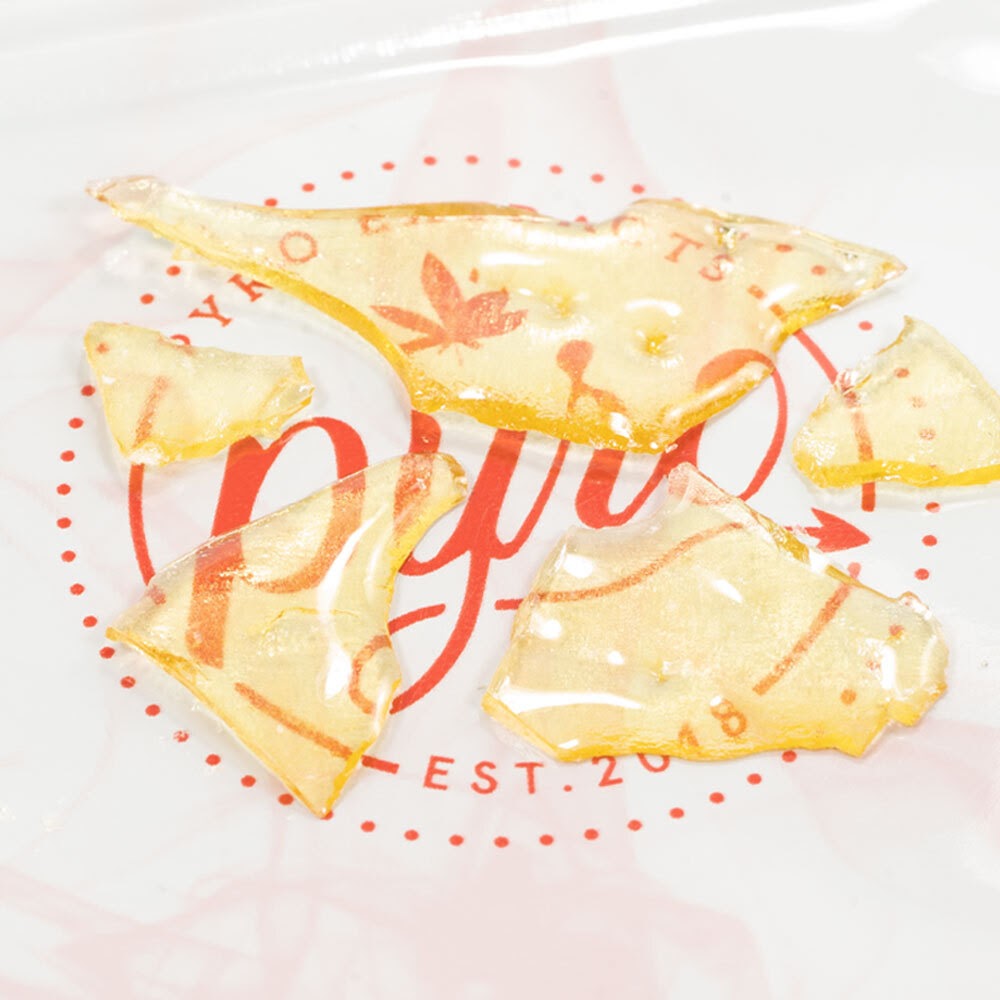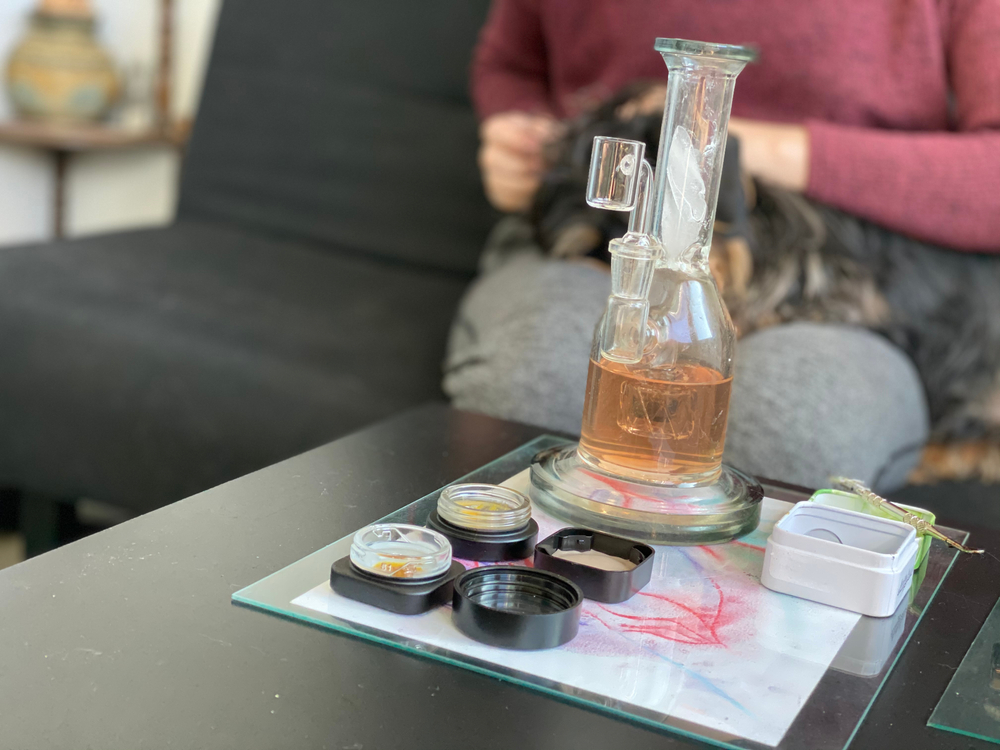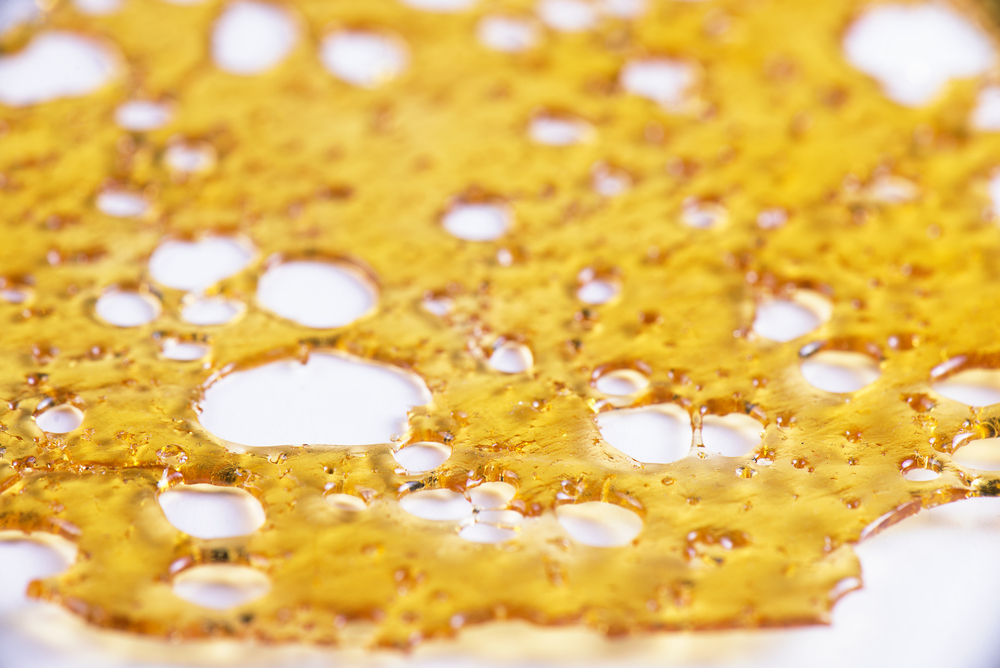If you’ve been occupying the world of weed for a while, you’ve likely already heard about shatter. This cannabis extract has soared in popularity over recent years for several reasons, including its sheer potency and versatility in consumption methods.
It seems as though every time you blink your eyes, a new variant of cannabis extract is taking the market by storm. It’s enough to make anybody’s head spin!
That said, shatter remains a fan-favourite amongst tokers, building up a stellar reputation within the cannabis community as one of the most admired and widely-used options currently available.
If you’re relatively new to the game and therefore new to shatter, don’t sweat it! That’s what we’re here for!
Today, we’re going to be breaking down everything there is to know about shatter, including what it is, how it’s made, how it stands up to other cannabis extracts and, finally, how to use it.
So, strap in because there is a boatload of information coming your way!
What is Shatter?

In the grand scheme of things, shatter is still a relatively new product on the cannabis scene even though it’s seen an increase in popularity in recent years. The product itself falls under the broader category of cannabis extracts.
As the name implies, manufacturers create these potent products by extracting the essential oils and delectable cannabinoids (such as THC and CBD) and terpenes from the cannabis plant material and isolating them, thereby creating a stronger, more concentrated product.
For a quick overview, the creation process introduces a chemical solvent to cannabis flower. The most commonly utilized solvents include butane, propane, or CO2, depending on the desired final product.
That said, to clarify, not all cannabis extracts require the use of a solvent. However, in the case of making marijuana shatter, it does.
The reason behind the name cannabis ‘shatter’ is due to this cannabis extract’s particularly glass-like texture. So, it ‘shatters’ when you break it apart. High-quality shatter is translucent and comes in varying shades of amber.
As we said, extracts are more concentrated forms of standard weed flower. Shatter can contain upwards of 90% THC or more by weight, making it one of the most potent options available on the market.
This fact in itself is one of the strongest driving forces behind the skyrocketing popularity of marijuana shatter.
How is Cannabis Shatter Made?
Like we said before, many cannabis concentrates, like shatter, are created using chemical hydrocarbon solvents. Among the most common are butane, propane and C02 (supercritical carbon dioxide).
However, CO2 is not as widely utilized for cannabis concentrate extraction. Typically, producers use it to create other products, such as CBD/THC distillate and cannabis oil.
When it comes to making shatter, producers begin by combining the dry medical marijuana plant material with their selected solvent.
Extraction
Once the solvent has worked its magic and pulled out all its cannabinoids and terpenes, the raw cannabis oil is ‘purged’ of the chemical solvent in a vacuum oven.
After, heat and pressure are applied to remove any remaining solvents, so all that’s left is pure butane hash oil (BHO)!
From there, this butane hash oil can be utilized to create various cannabis concentrates, including wax, crumble, and shatter, depending on the post-processing methods used.
Winterization

Don’t change the channel. The shatter weed creation process isn’t done yet!
The next step is a process called winterization. This phase in shatter-making involves removing plant lipids and waxes.
This winterization process is usually performed more than once, roughly 3-5 times. After the cooling and filtering stages are finished, the ethanol is then evaporated from the mix.
What’s left is glass-like shatter weed!
What Makes it so Special Compared to Other Extracts?
As outlined in the creation process, several cannabis extracts, like shatter, first become butane hash oil (BHO).
That said, what sets shatter apart and makes it special is how the BHO is processed. In other words, the secondary step, winterization, is essential in how shatter is made. This procedure is what produces the glass-like consistency that many tokers appreciate about shatter.
The various resulting products created using BHO come in a wide range of forms and consistencies. However, the incredibly unique texture of shatter is one of the most difficult to achieve. This consistency is what causes the ‘shattering’ effect, which is particular only to this extract.
Not only that, as we stated before, shatter can be incredibly potent.
In fact, it’s one of the most potent options for cannabis concentrates currently available on the market!
With a THC concentration of up to 90% or more, you’re unlikely to find other products that can compare to its sheer strength.
For users looking to experience strength and terpenes, shatter also poses a practical option. The next best choice for terp chasers would be rosin, and if you’re wondering the difference between rosin vs shatter, you might just have 2 concentrates you need to try before the next 710 dab day!
How to Use Shatter

If you were to ask a seasoned toker what their preferred method for enjoying shatter would be, the answer you’d most likely receive would be dabbing – if you’re unsure what that term means, no worries! We’ll provide a brief overview.
Essentially, dabbing is the process of using a device called a ‘dab rig,’ which is basically a modified water pipe or bong. However, instead of a bowl, tokers use a ‘nail,’ made from heat-resistant materials, like glass or quartz. This added protection allows them to be exposed to high temperatures using a small blowtorch or another high-heat source.
Like bongs, dab rigs also have a primary chamber containing water, and users inhale the vapour that passes through this chamber.
After the nail is exposed to heat, you should let it cool for a little bit before dropping your desired concentrate, in this instance, shatter, onto it. The nail will then almost instantaneously vaporize the extract, which users then inhale.
The action of ‘dropping’ dabs is typically performed using a dab tool. The amount of extract used will depend on the experience level and individual tolerance of the specific user.
While dabbing is by far the most popular method of consuming shatter, it’s not the only way. Tokers can also integrate it into regular joints to create what’s known as a “twax joint,” mix it into cooking oil or fat to make edibles or use it in a vape.
That said, if you’re new to extracts, or even shatter, in particular, it’s best to adhere to the old stoner homage of start low and go slow.
Need more information? Check out our “how to smoke shatter” guide before hitting the dab!
‘Shattering’ the Expectation of Cannabis Extracts
With soaring high THC levels and a wide range of consumption methods, by the end of this post, it should come as no surprise that shatter is one of the most widely-used and sought-after cannabis extracts currently available on the market.
However, it’s vital to keep in mind that this product, in particular, is much stronger than your standard old-school weed flower, so users should adjust their dosage accordingly. In other words, know your limit, stay within it.
If you’re new to the world of cannabis extracts, this advice is especially crucial. These products can make for an awesome method for enjoying everyone’s favourite herb. Still, it’s important to be responsible and start low and go slow to avoid any negative reactions or experiences, such as green out.
So, if you’re a newbie, we would advise trying shatter with a more experienced toker companion who can walk you through it and ensure that the experience is as positive as possible.
After all, the more, the merrier, right? It’s all about having a good time with your favourite bud(s).
Happy dabbing!


 No products in the cart.
No products in the cart.